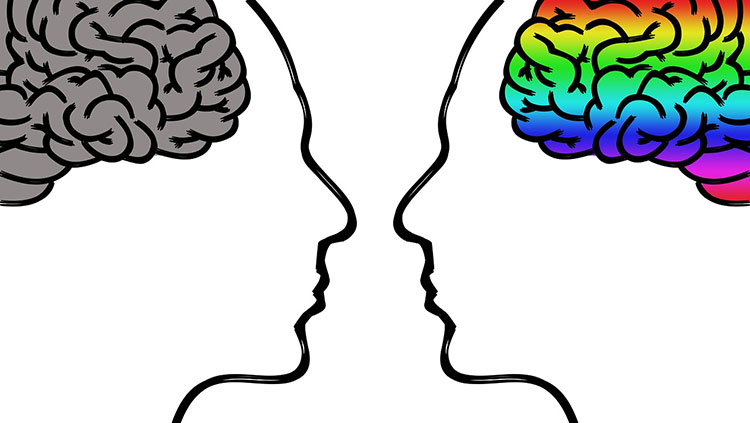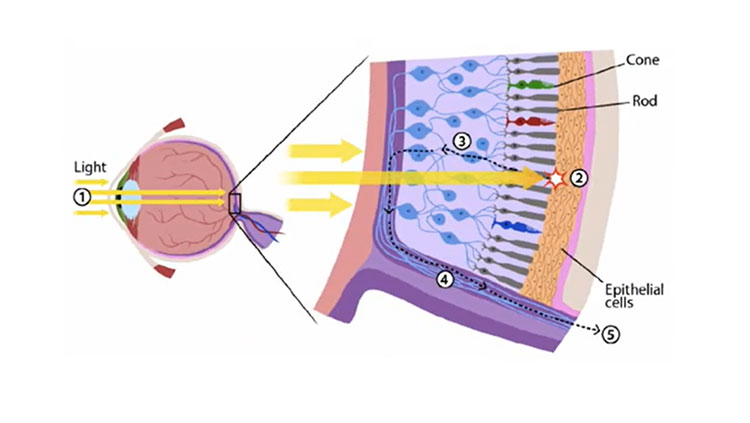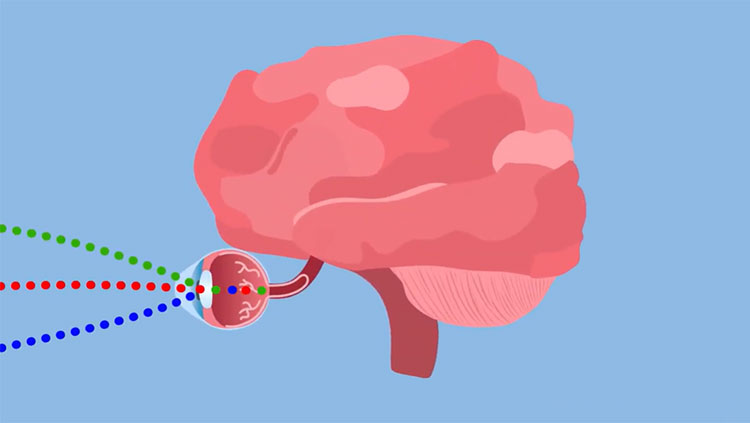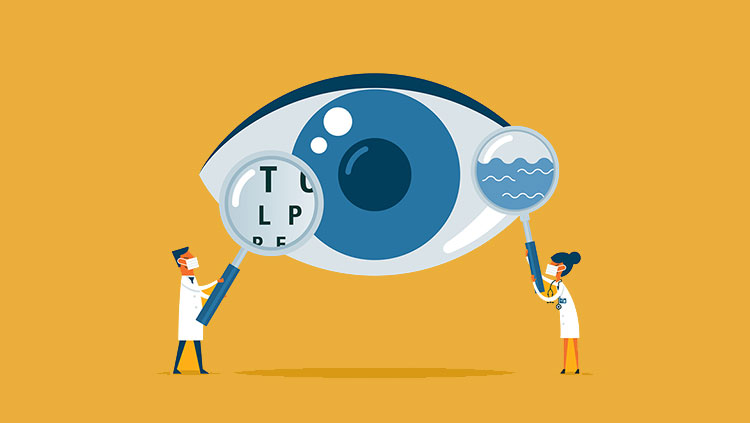Do We See The Same Red?
- Published17 May 2016
- Reviewed13 May 2016
- Source BrainFacts/SfN
How do the various wavelengths of visible light become what we know as color? Find out in this animated video about vision and color perception by recent UK graduate Matthew Sugrim. The video took first place in the 2015 Brain Awareness Video Contest as well as the People’s Choice Award.
Want to see your video here? Learn more about the Brain Awareness Video Contest and start planning your submission today!
CONTENT PROVIDED BY
BrainFacts/SfN
Transcript
Red. It's the color of danger, of love, and bulls don't like it very much.
But do you see the same red, that I see?
It's an intriguing question, but is there an answer.
Is red, always red?
Light is made of electromagnetic waves, which travel through space as packets of energy we call photons.
Some photons extend over very long distances.
Others are very short, and we use different parts of this spectrum for different things.
The longest visible photons, we call red.
But do we know if red looks the same to everyone?
The answer's in how our body turn photons into color.
Everything you ever see is due to a massive network of neurons in your eyes and your brain.
Neurons are simply cells with special communications hardware: axons and dendrites.
Axons carry electrical pulses from the cell's body to where they connect with dendrites.
The pulses cause neurotransmitters to be released from the axon, which cross the tiny gap and are detected by receptors on the dendrite's surface.
Now, neurons are very excitable cells.
Different neurotransmitters will either excite or inhibit their activity.
When a neuron is excited it will send pulses down its axon.
If it is inhibited, and so not excited enough to pulse, it won't do much and this is basically how the brain works.
It's eighty six billion neurons making a million, billion connections.
So. Let's begin at the beginning.
Each of your eyes is home to several million light sensitive neurons, called cones.
In the dark cones are very active, constantly releasing inhibitory neurotransmitters, putting bipolar cells to sleep.
When we turn on the light, proteins in the cones sensitive to light, called photopsin, absorb some of the photons.
This triggers a massive biochemical cascade within the cell that slows neurotransmitter release.
However, photopsin won't absorb any old photon; it has a preference.
The closer a photon's wavelength is to this preference the more likely it is to trigger the cascade.
Humans have three types of photopsin, each with a different preference.
Together these three types of cone can absorb all the wavelengths we can see.
Photons from red things are the longest.
The short wave cone can't detect these, but both the medium and long wave cones do and together produce the neural pattern for 'red'.
But this isn't you seeing red.
To see anything, the signals have to first travel to your brain and are carried there via ganglion cells.
How this happens is a bit complex.
Each ganglion cell receives signals from several bipolar cells.
Some of these excite the ganglion cell and some inhibit it.
These simple inputs are carried to the brain, not individually, but as the ratio of inhibitory to excitory inputs.
We call this ingenious mechanism opponancy processing and is why the color of objects appears not to change despite changing light throughout the day.
But we digress.
So the signals from the eye travel to the visual areas at the back of the brain, exciting neurons in the first visual area, V1.
From V1, they pass through V2, then V4, then onward to the inferior temporal cortex where objects are recognized.
But how do our brains 'recognise' a car, or your cat?
Put very simply, if each time you look at your cat the same group of neurons become excited we say those neurons recognize your cat.
How the brain does this so accurately and at such speed is an active area of study for neuroscience and is beyond the scope of this video, but this is essentially how our brain makes sense of what we see.
Functional brain imaging show us that an area of the brain, near V4, recognizes long wave photons.
These neurons don't hold up a red flag inside your head or flick a switch for you to see red.
They don't do anything special, except become excited.
And these cells being excited actually is you seeing red.
So is red always red?
Red is, put simply, the conscious experience of an electromagnetic wavelength we then name.
It is caused by the same neural mechanisms in all of us in response to long wave photons detected by our eyes.
It is complicated, but it's not magic.
Variations in the composition of cones in our eyes and the exact wiring of our brains may cause very slight variations in color perception.
But unless you are color blind, where your cones prefer slightly different photons, then yes, because of the way our bodies process light, red really is red.
Also In Vision
Trending
Popular articles on BrainFacts.org

















